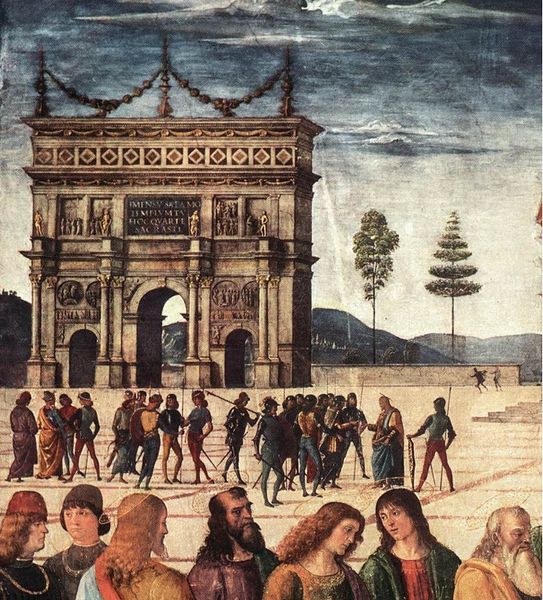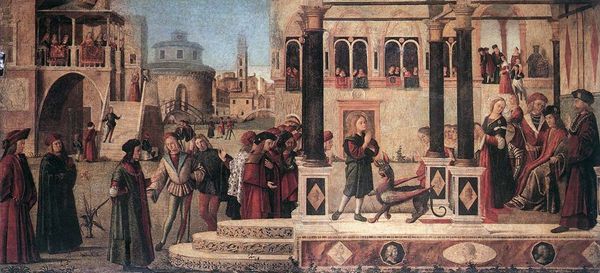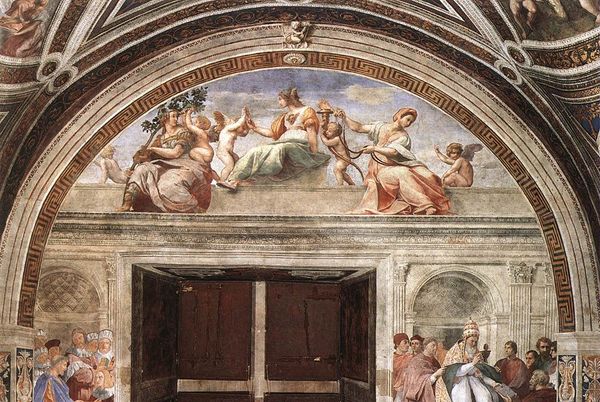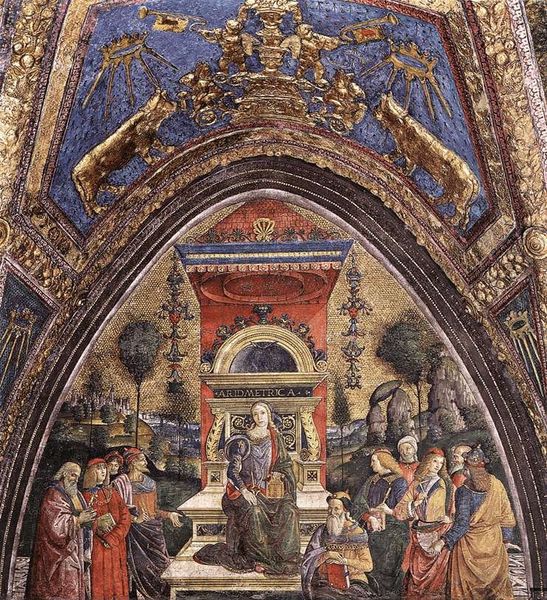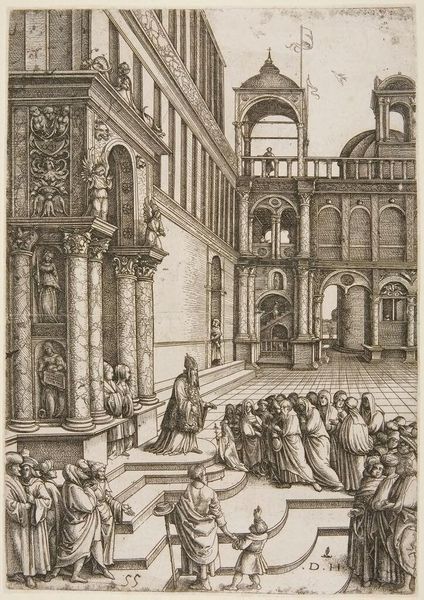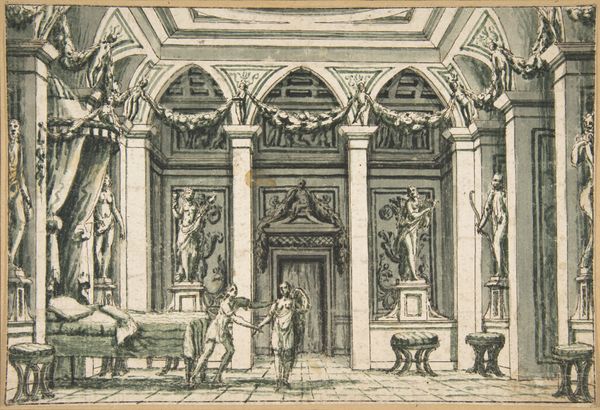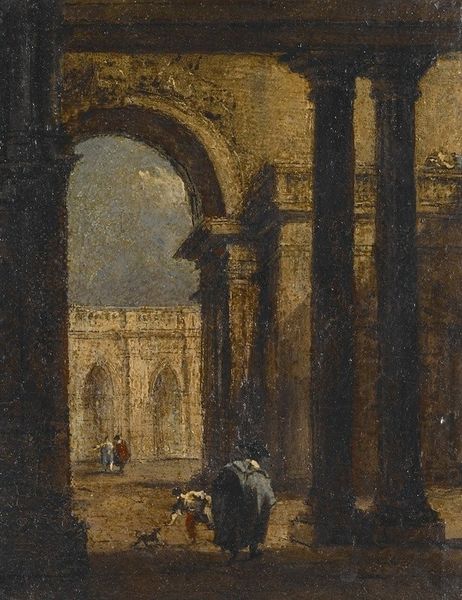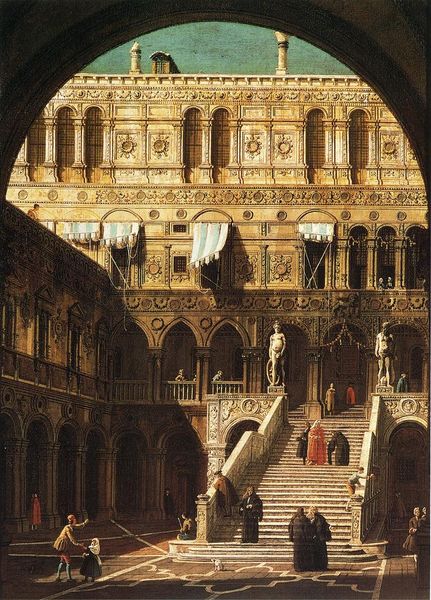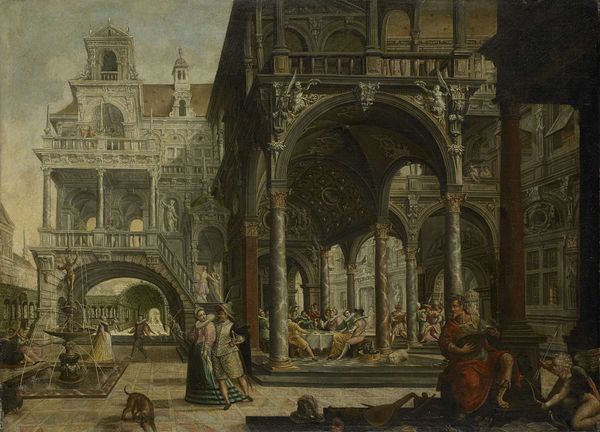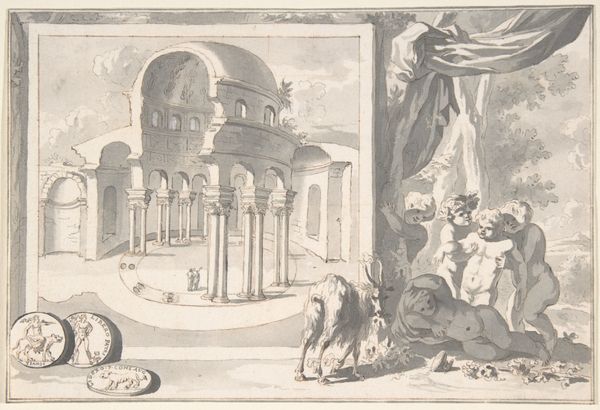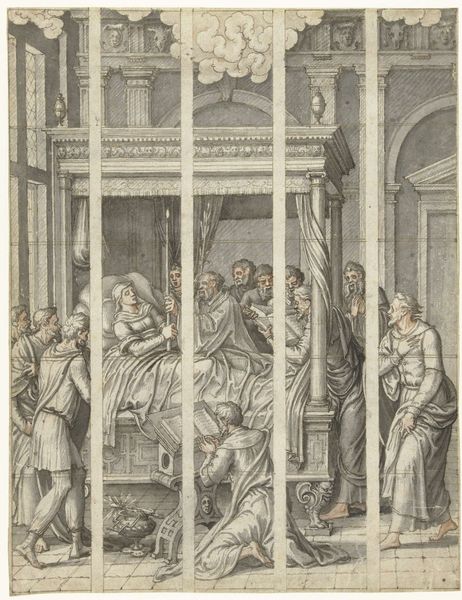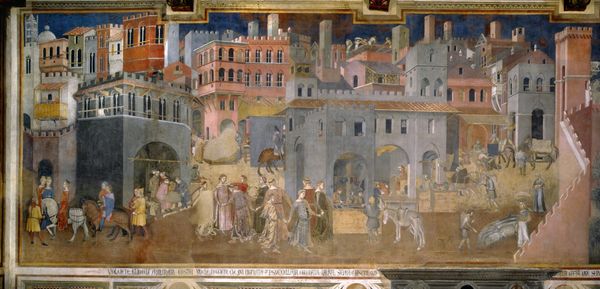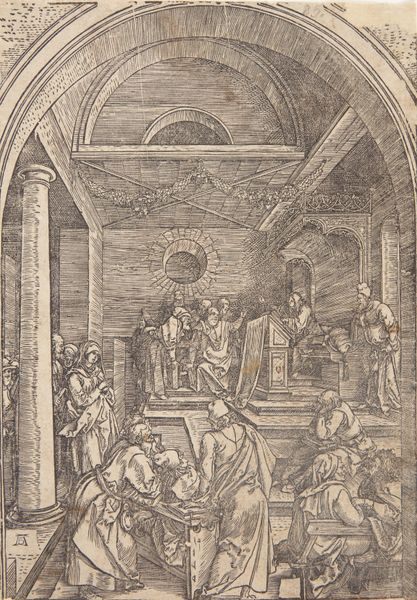
fresco
#
high-renaissance
#
landscape
#
holy-places
#
perspective
#
fresco
#
11_renaissance
#
arch
#
christianity
#
history-painting
#
italian-renaissance
#
building
#
christ
Copyright: Public domain
Curator: Perugino's fresco, "Christ Handing the Keys to St. Peter," from 1482, is quite a landmark of the Early Renaissance, wouldn't you agree? Editor: It's striking how staged the whole composition feels. Like actors posed against a theater backdrop. I wonder what materials went into achieving this specific visual texture of this "backdrop" itself. Curator: The architecture certainly draws the eye. Its design reinforces the Papal authority symbolized by the keys. Look at the repetition, the arches mirroring each other—a calculated display of power. Consider the socio-political message aimed to reinforce the Vatican’s claim as the only conduit to salvation. Editor: Absolutely. The geometric precision…frescoes of that era really placed a premium on crafting permanence out of humble materials. And thinking about the plaster, the pigments—these are all earthly elements elevated to this higher symbolic function within a deeply hierarchical social structure. The hands that prepared that ground...the layers. Curator: Indeed, it reflects the High Renaissance's preoccupation with perspective and order, a very self-aware effort to craft an ideal vision of both earthly and divine order. This detail shows the artist using linear perspective not just as technique but to visually articulate the spiritual and earthly hierarchy. Editor: And beyond technique, it really underscores the value placed on skilled labor. Someone spent an awful lot of time perfecting how to craft permanence with these gestures of making. Frescoes aren't exactly known as mediums one just whips up, they’re a physical process and one to admire. It also adds to that reading you offered – of the Vatican and of social and cultural authority and making itself. Curator: Precisely. The fresco, a permanent part of the Vatican, also reinforces the Church’s standing power. The entire composition serves as visual testament to religious and institutional authority. Editor: It's a fascinating intersection of materials, labour, and that social order that you pointed to. The production itself becomes a symbol. Curator: I see it as an example of art deployed as a tool to further reinforce structures and the institutions behind the image. Editor: Thanks for framing it that way! Now I am really walking away contemplating that the work truly embodies how craft and production, come together.
Comments
No comments
Be the first to comment and join the conversation on the ultimate creative platform.
